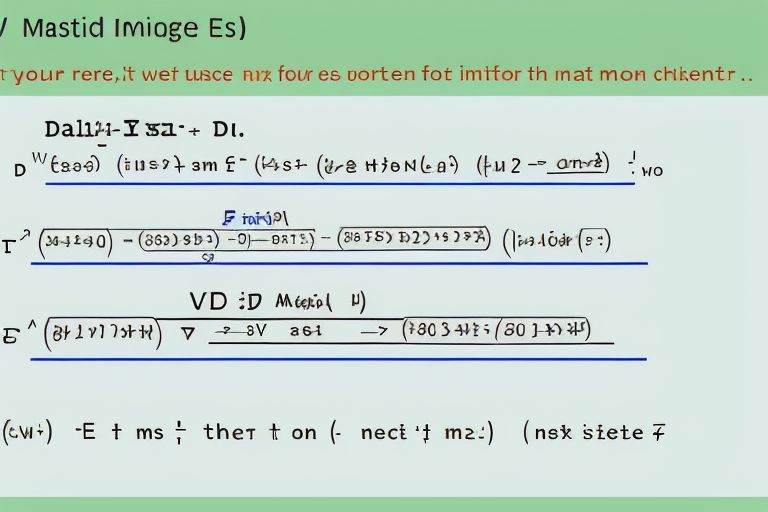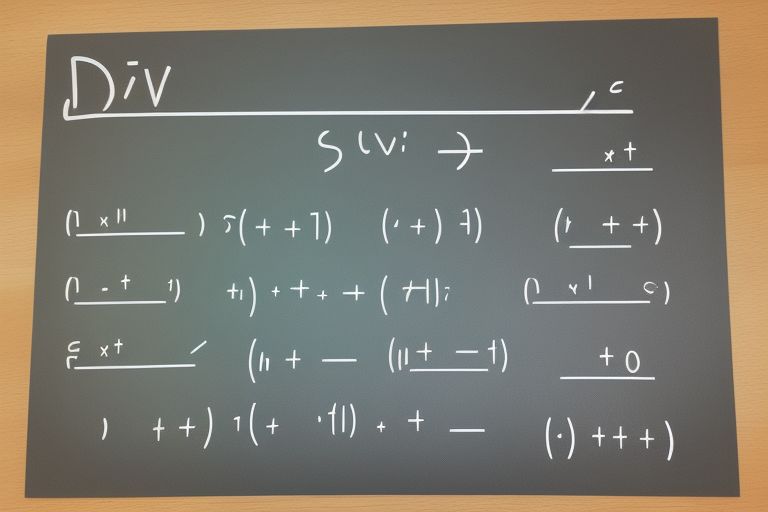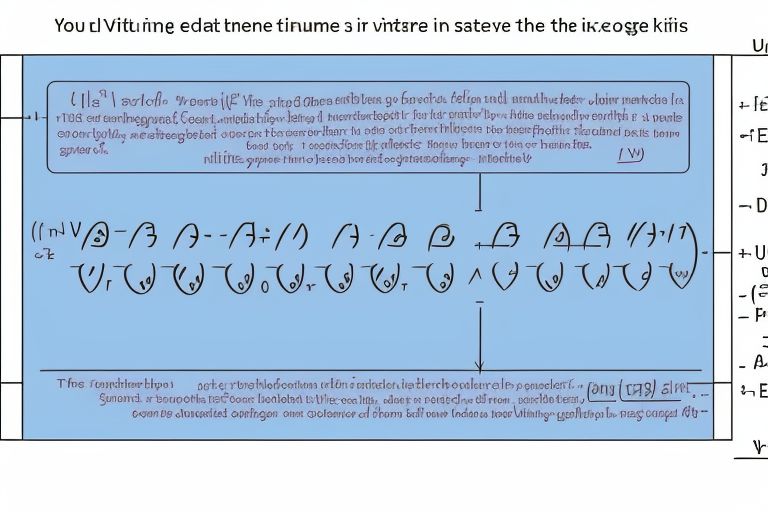Integration by parts is a powerful technique used in calculus to simplify and solve certain types of integrals. It’s often seen as one of the more tricky concepts for students, but with a little understanding, it becomes easier to apply. At its core, this method is based on the product rule of differentiation, and it allows you to break down complicated integrals into simpler ones. Whether you’re solving problems in physics, engineering, or mathematics, knowing how to use integration by parts can save you time and make your calculations much smoother.
To use integration by parts effectively, you’ll need to understand the basic formula: ∫u dv = uv – ∫v du. This formula might seem confusing at first, but don’t worry! Once you grasp the concept behind choosing u and dv, everything will start to click. The trick is to choose your functions wisely—u should be something that simplifies when you differentiate it, and dv should be something that’s easy to integrate. With practice, integration by parts becomes an essential tool in your math toolkit, allowing you to tackle a wide variety of integrals with confidence.
Table of Contents
What is Integration by Parts A Beginner’s Guide

Integration by parts is a method used in calculus to simplify certain integrals. It is based on the product rule for differentiation and is especially helpful when the integrand is a product of two functions. The idea is to break down a difficult integral into easier parts. This method transforms a complex integral into a simpler one by choosing parts of the equation to differentiate and integrate. Once you get the hang of the technique, it becomes easier to solve integrals that would otherwise seem impossible. Integration by parts is useful in a variety of fields, from physics to engineering, helping to solve complex problems efficiently.
How to Use Integration by Parts: Step-by-Step Instructions
To use integration by parts, follow these simple steps. First, identify the two parts of the function in the integral that can be separated into u and dv. Next, differentiate u to get du, and integrate dv to get v. After that, apply the formula: ∫u dv = uv – ∫v du. This will give you a new integral to solve. Be sure to simplify the new integral as much as possible. You may need to apply integration by parts multiple times, especially for more complex problems. With practice, the process becomes faster and more intuitive, making you more confident in tackling integrals using this method.
Understanding the Formula for Integration by Parts
The formula for integration by parts is essential to solving many complex integrals. It is written as ∫u dv = uv – ∫v du, where u and dv are parts of the original function. The trick is to pick the right parts to integrate and differentiate. The function u is typically chosen to be something that simplifies when differentiated, while dv should be easy to integrate. After applying the formula, the resulting integral ∫v du can often be simpler than the original one, making the overall problem easier to solve. Understanding how the formula works is key to mastering integration by parts and applying it successfully.
Common Mistakes to Avoid When Using Integration by Parts
When using integration by parts, it’s easy to make a few common mistakes. One of the most frequent errors is selecting the wrong functions for u and dv. Choosing u to be a function that does not simplify when differentiated can make the problem harder, not easier. Another mistake is forgetting to apply the formula correctly or incorrectly simplifying the resulting integral. Sometimes, people forget to subtract the second integral or make errors in differentiating or integrating. To avoid these mistakes, practice with simpler problems first and double-check each step. As you gain experience, you’ll develop a better sense of which functions to select for efficient results.
Real-Life Applications of Integration by Parts in Calculus
Integration by parts has several real-life applications in various fields. In physics, it’s used to solve problems involving energy, motion, and waves. Engineers use integration by parts to model complex systems and calculate things like work done or the heat transfer in materials. It’s also useful in economics for calculating profits or understanding the behavior of markets over time. For example, it can be used to integrate expressions for accumulated cost or income over a period. By breaking down complicated formulas into simpler parts, integration by parts makes it easier to apply calculus to practical situations and get precise solutions.
Choosing the Right Functions for Integration by Parts

Choosing the right functions for integration by parts is crucial for simplifying integrals. The general strategy is to pick u as the function that becomes simpler when differentiated. Common choices for u are logarithmic, inverse trigonometric, or polynomial functions. On the other hand, dv should be a function that can be easily integrated. For example, if the integral contains exponential or trigonometric functions, these are often good candidates for dv. By carefully selecting u and dv, you can reduce the complexity of the integral and make the process more manageable. The goal is always to make the new integral easier to solve than the original.
Advanced Tips for Mastering Integration by Parts
Mastering integration by parts involves more than just following the formula—it requires a bit of strategy and creativity. One advanced tip is to use the technique more than once. Some integrals can’t be solved with a single application of integration by parts, so you may need to apply the method multiple times. Another helpful tip is recognizing patterns in integrals, which can help you predict the most efficient way to approach the problem. Additionally, some integrals may require the use of integration by parts combined with other techniques, like substitution or partial fractions, to fully simplify the problem and find the solution.
How Integration by Parts Helps Solve Difficult Integrals
Integration by parts is particularly useful for solving integrals that involve products of functions. When faced with a difficult integral, using this method can transform it into a simpler one that is easier to evaluate. For example, integrals involving polynomial and exponential functions, or trigonometric and logarithmic functions, can often be solved by breaking them down using integration by parts. The process helps simplify the problem by reducing it to more manageable parts. It’s a valuable technique for dealing with integrals that would otherwise be tough to solve directly, making it an essential tool for both students and professionals working with complex mathematical problems.
The Relationship Between Differentiation and Integration by Parts
Differentiation and integration by parts are closely related concepts. Both are fundamental operations in calculus, and integration by parts is essentially the reverse of the product rule for differentiation. The technique helps transform a product of two functions into a simpler integral by using the relationship between differentiation and integration. By carefully choosing which function to differentiate and which to integrate, you can make use of the product rule in reverse to simplify complicated integrals. Understanding this connection can help you approach integration by parts with a better perspective, making it easier to recognize when and how to use the technique.
Why Integration by Parts Is Essential for Your Calculus Journey

Integration by parts is a crucial technique in any calculus student’s journey. It unlocks the ability to solve a wide range of integrals that cannot be handled by basic integration rules alone. By mastering this method, you’ll be able to tackle more complex mathematical problems with ease. It also serves as a foundation for understanding other advanced calculus concepts, such as differential equations and series expansions. Whether you are studying for exams, working on research, or solving real-world problems, knowing how to use integration by parts will be an essential tool in your mathematical toolbox, making your calculus journey more successful and enjoyable.
Conclusion
In conclusion, integration by parts is a valuable tool that can help you solve many tough integrals in calculus. By breaking down complicated problems into simpler parts, this technique allows you to make the math easier to handle. It may seem tricky at first, but with practice, you’ll find it much easier to apply and understand. Whether you’re a student learning calculus or someone solving real-world problems, this method is an essential skill to have in your math toolbox.
Remember, the key to mastering integration by parts is practice. The more you practice, the more natural it will feel. Take your time, choose your functions wisely, and soon you’ll be solving even the toughest integrals with confidence. Keep going, and don’t be afraid to ask for help if you need it—this technique will definitely make your calculus journey smoother and more enjoyable.
FAQs
Q: What is integration by parts?
A: Integration by parts is a technique used to solve integrals where the integrand is a product of two functions. It breaks down the problem into simpler parts using the formula: ∫u dv = uv – ∫v du.
Q: When should I use integration by parts?
A: You should use integration by parts when the integral involves a product of functions that is difficult to integrate directly. It’s especially useful for functions like polynomials and trigonometric functions.
Q: Is integration by parts hard to learn?
A: It can seem hard at first, but with practice, you’ll get the hang of it. Start with simple problems and slowly work your way up to more complex ones.
Q: Can I use integration by parts more than once?
A: Yes, sometimes you’ll need to apply integration by parts more than once to solve the integral completely, especially for more complicated problems.
Q: What is the formula for integration by parts?
A: The formula is ∫u dv = uv – ∫v du. You pick u and dv, differentiate u to get du, and integrate dv to get v. Then, apply the formula to simplify the integral.



